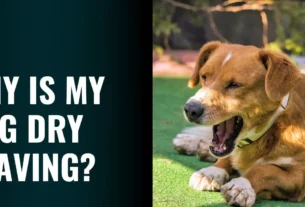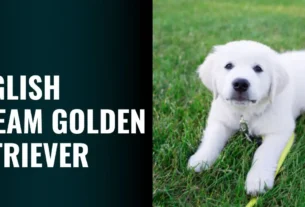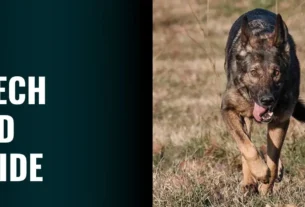If you are reading this, chances are you are panicking and thinking, “What do I do if my dog ate gum?”
I get it as I am a veterinarian, and I have seen many pet owners in a similar situation. Whether your dog ate chewing gum off the floor or chewed up an entire pack, it can be scary. Some gums contain ingredients that are toxic to dogs, especially xylitol.
So, what do you have to do in this condition? Here, I am going to tell you everything you need to know, from symptoms to treatment, and help you figure out the right steps to take if your furry friend got their paws on some gum.
Why Gum Can Be Dangerous for Dogs?
Gum might seem harmless to us, but for dogs, it’s a different story. Many chewing gums, especially sugar-free ones, contain an ingredient called xylitol. And this is where things get serious.
Xylitol is extremely toxic to dogs, even in small amounts. When a dog consumes xylitol, it can cause a sudden release of insulin. This leads to a dangerous drop in blood sugar, a condition known as hypoglycemia. If left untreated, it can progress to seizures, liver failure, or even death.
And it’s not just xylitol we need to worry about. Even gum without xylitol can cause problems if swallowed, such as intestinal blockages, especially if a dog eats a pack of gum with wrappers.
What Happens If My Dog Ate Gum?
What could happen if your dog ate gum? Simply, it all depends on the situation. Whether your dog ate a piece of gum, a whole pack of gum, or simply licked one off the floor, the consequences vary based on the ingredients and how much was consumed.
1. Gum Containing Xylitol
This is the most critical case. Dogs such as Golden Retriever or Czech GSD may eat gum with xylitol and are at risk of serious toxicity. Symptoms can start within 15 to 30 minutes and may include:
- Vomiting
- Weakness
- Loss of coordination
- Collapse
- Seizures
- Coma
In some cases, xylitol can also cause liver failure, which can develop over hours or even days.
2. Gum Without Xylitol
If your dog ate gum without xylitol, the danger might be lower, but that doesn’t mean it is safe. Gum is not digestible. A few things can still happen:
- Gastrointestinal upset (vomiting, diarrhea)
- Intestinal blockage, especially in small dogs or if a pack of gum is consumed
- Dehydration due to vomiting
3. Gum Wrappers or Packaging
It’s easy to forget about the gum wrapper, but if your dog ate chewing gum off the floor with foil or paper, that could be another risk. These materials don’t break down easily and can cause blockages or irritations in the gut.
Symptoms to Watch Out for After Your Dog Eats Gum
Not all symptoms appear immediately, and some can take a few hours to develop. I recommend watching your dog closely for any of these signs I have mentioned below
Gastrointestinal Symptoms:
- Vomiting
- Diarrhea
- Loss of appetite
- Abdominal pain or bloating
Neurological Symptoms (Especially With Xylitol):
- Tremors
- Seizures
- Disorientation
- Muscle weakness
Metabolic Symptoms:
- Lethargy
- Pale gums
- Collapse
- Increased heart rate
If your dog ate gum with xylitol, any of these symptoms could be life-threatening. Do not wait for symptoms to appear. Get your dog to the vet immediately.
What to Do If My Dog Ate Gum?
Now let’s talk about what you should actually do if you’re thinking, “What should I do if my dog ate gum?” I’ll guide you through the immediate steps.
Identify the Type of Gum
Find out whether the gum contained xylitol. Look at the ingredients list on the pack if possible. Words like “sugar-free,” “low-calorie,” or “dental gum” often mean xylitol might be present.
If you see xylitol on the label, do not wait. It’s an emergency.
Estimate How Much Was Eaten
Try to figure out how much gum your dog consumed. Was it just a piece of gum, or did your dog eat a pack of gum? The quantity matters, especially for smaller dogs.
Even one piece of xylitol-containing gum can be fatal for small breeds.
Call Your Veterinarian or an Emergency Clinic
Don’t wait. Call your vet or a pet poison hotline and tell them:
- The gum brand and ingredients (if known)
- How many pieces were eaten
- Your dog’s weight and breed
- When it happened
They will guide you on whether to bring your dog in or monitor at home.
Do Not Try to Induce Vomiting at Home
This is a big one. Unless your vet specifically tells you to induce vomiting, do not try to do it on your own. Inducing vomiting in certain situations can make things worse.
Your dog may suffer from dehydration and electrolyte imbalance if excessive vomiting occurs.
Watch for Symptoms
Even if the gum didn’t contain xylitol, you should monitor your dog for the next 24 to 48 hours. Watch for changes in appetite, behavior, or bowel movements.
If any sign appears, you have to contact or visit a nearby vet.
How Vets Treat Gum Ingestion in Dogs?
Veterinary treatment for a dog ate gum depends on the ingredients and the time since ingestion. Based on the cases I have experienced, I follow a structured protocol when treating such cases, which is:
If Xylitol was ingested recently:
- Induce vomiting
- Activated charcoal to limit absorption
- IV fluids to support hydration and organ function
- Blood sugar monitoring
- Liver enzyme tests
- Hospitalization if symptoms are severe
If no Xylitol but gum or wrappers were ingested:
- X-rays or ultrasound to check for blockages
- Fluid therapy
- Monitoring for GI distress
- Surgical removal if an obstruction is found
Dog Ate Gum But Seems Fine – Should You Still Worry?
Yes, you should.
I have had many cases where owners said, “My dog ate chewing gum off the floor and seems fine,” but symptoms appeared hours later. Just because they look okay now doesn’t mean they are out of danger.
Xylitol poisoning can have a delayed onset. Even dog ate gum without xylitol can still cause intestinal issues that don’t show up right away.
Always call your vet, even if your dog seems normal.
How to Keep Your Dog Safe From Gum?
The best treatment is prevention. Dogs are curious and will eat almost anything that smells sweet. So, you have to make sure they stay away from gum or other poisonous materials. The following tactics can help you keep your pet away from gum:
- Store Gum in High Places: Keep gum out of reach. Even unopened packs should be stored in cabinets or drawers.
- Educate Family Members: Make sure everyone in your home knows that gum, especially sugar-free gum, is dangerous for dogs.
- Be Extra Careful During Walks: Your dog ate chewing gum off the floor? It happens all the time. So, be cautious when walking in public places and don’t let your dog sniff or pick up unknown items.
- Use Trash Cans with Lids: Dogs are experts at dumpster diving. Use pet-proof trash cans to prevent them from finding discarded gum or wrappers.
Let’s Rewind
If you are facing this situation of your dog ate gum, don’t panic, but don’t delay either. Whether your dog ate a piece of gum, a pack of gum, or simply chewing gum off the floor, there are real risks involved, especially if xylitol is part of the ingredients.
I have seen cases go both ways. Some recover quickly with prompt care, while others face severe complications due to waiting too long. As a vet, I urge you to always play it safe and contact a professional right away. Your quick response could save your dog’s life.
People Also Ask
What happens if my dog ate gum?
If the gum contains xylitol, it can cause low blood sugar, seizures, or liver failure. Even without xylitol, gum can lead to digestive problems or blockages.
What to do if your dog ate gum?
Call your veterinarian immediately. Identify the gum’s ingredients, estimate how much was eaten, and monitor your dog closely for symptoms.
Is it fatal if the dog ate gum with xylitol?
It can be. Xylitol is extremely toxic to dogs and can cause serious complications even in small doses. Seek emergency care immediately.
What if my dog ate gum without xylitol?
While it’s less dangerous, it can still lead to vomiting, diarrhea, or intestinal blockage. Contact your vet and monitor your dog’s behavior.
Should I worry when my dog ate chewing gum off the floor?
Yes. If you’re unsure whether it contained xylitol, it’s always safer to consult your veterinarian and observe your dog closely.



